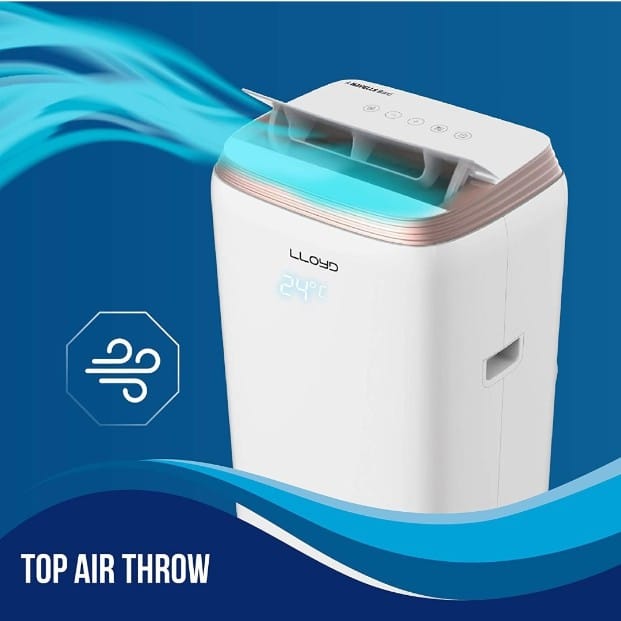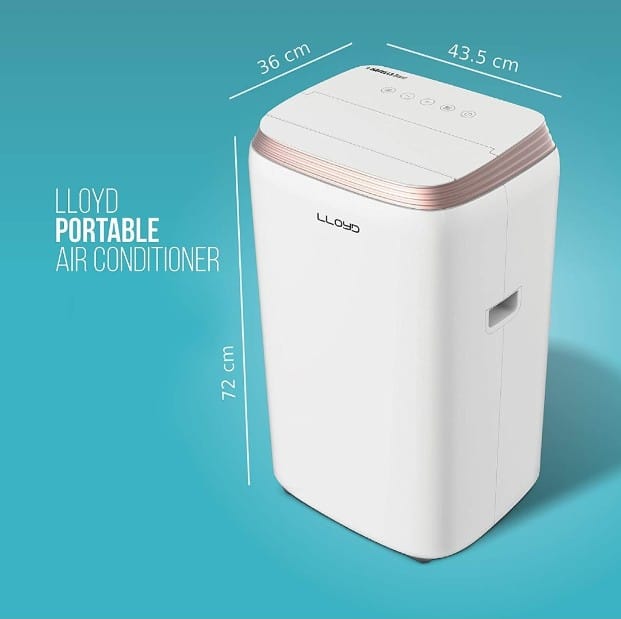





Air condition for good cooling low price less electricity
Portable AC benefits for traveling or, who ever stays on rent with low electricity consume
Versatility:
- Can be used in various settings such as homes, offices, RVs, or even outdoors.
- Suitable for temporary cooling solutions during events or gathering
Easy Installation:
- No need for permanent installation or modifications to the structure.
- Simply plug into a power source and vent through a window or sliding door
Affordability:
- Generally more cost-effective than installing central air conditioning systems.
- Provides a budget-friendly cooling option for small spaces or single rooms.
Energy Efficiency:
- Allows for cooling specific areas rather than cooling an entire home, saving energy.
- Some models feature programmable settings or energy-saving modes
Humidity Control:
- Helps reduce indoor humidity levels for a more comfortable environment.
- Improves indoor air quality by reducing moisture, which can inhibit mold and mildew growth.
No Permanent Alterations:
- Ideal for historic or rented properties where permanent alterations are prohibited.
- Can be removed easily without leaving behind damage or marks.
Supplemental Cooling:
- Complements existing HVAC systems by providing additional cooling in specific zones.
- Useful during heatwaves or in rooms with inadequate ventilation.
Compact Design:
- Takes up minimal floor space compared to window or wall-mounted units.
- Sleek designs blend well with various interior décors.
Remote Control and Programmable Settings:
- Convenient remote control operation for adjusting settings from a distance.
- Some models offer programmable timers and settings for personalized comfort.
**Portable Air Conditioners: A Comprehensive Guide**
In the realm of home climate control, portable air conditioners have emerged as versatile solutions for cooling spaces without the permanence and complexity of traditional central air systems. These units offer flexibility, efficiency, and convenience, making them popular choices for a wide range of users, from apartment dwellers to homeowners seeking spot cooling solutions. In this guide, we’ll delve into the workings, advantages, limitations, and considerations of portable air conditioners.
**Introduction to Portable Air Conditioners**
Portable air conditioners are compact cooling units designed to provide relief from heat in small to medium-sized spaces. Unlike window or central air conditioning systems, they are standalone units that can be easily moved from room to room, making them ideal for apartments, offices, or homes where permanent installation is impractical or not desired.
**How Portable Air Conditioners Work**
These units operate on a simple principle: they draw warm air from the room, pass it over cooling coils containing refrigerant, and then expel the cooled air back into the space while simultaneously venting the hot air outside through an exhaust hose. Most portable AC units also have a dehumidifying function, removing excess moisture from the air and enhancing overall comfort.
**Key Components**
1. **Compressor and Refrigerant**: The compressor pressurizes the refrigerant, which then circulates through coils to absorb heat from the air.
2. **Evaporator and Condenser Coils**: The evaporator coil cools and dehumidifies the air, while the condenser coil releases the absorbed heat to the outside environment.
3. **Exhaust Hose and Venting Kit**: The exhaust hose expels hot air generated by the cooling process outside the room. A venting kit typically includes accessories for easy installation in windows or through walls.
4. **Air Filter**: Portable AC units feature filters that capture dust, debris, and other airborne particles, improving air quality.
**Advantages of Portable Air Conditioners**
1. **Portability**: The most obvious advantage is the ability to move the unit from room to room, providing cooling precisely where it’s needed.
2. **Easy Installation**: Unlike window units that require mounting, portable ACs can be set up with minimal effort and without permanent alterations to the structure.
3. **No Restrictions**: Renters or individuals living in historic buildings where alterations are restricted can still enjoy the benefits of air conditioning.
4. **Energy Efficiency**: Modern portable AC units are designed to be energy-efficient, offering cooling without significantly increasing electricity bills.
5. **Versatility**: Some models come with additional features like programmable timers, remote controls, and multiple fan speeds, enhancing user convenience.
**Limitations and Considerations**
1. **Limited Cooling Capacity**: Portable AC units are generally suitable for small to medium-sized rooms. Larger spaces may require multiple units or a different cooling solution.
2. **Exhaust Hose Placement**: Proper venting is crucial for efficient operation. Users need to position the exhaust hose near a window or another opening to expel hot air outside.
3. **Noise**: While modern units are quieter than their predecessors, portable air conditioners still produce some noise, which may be a concern for light sleepers or noise-sensitive individuals.
4. **Maintenance**: Regular cleaning of filters and occasional drainage of condensate are necessary to ensure optimal performance and longevity.
5. **Cost**: Portable air conditioners can be more expensive than window units of comparable capacity, and they may not offer the same level of cooling efficiency.
**Conclusion**
Portable air conditioners offer a convenient and flexible cooling solution for a variety of spaces. Their portability, ease of installation, and energy efficiency make them a popular choice for renters, homeowners, and businesses alike. However, users should carefully consider their specific cooling needs, space limitations, and installation requirements before purchasing a unit. With proper maintenance and setup, a portable AC can provide reliable comfort during hot summer months, creating a cool oasis in any room.
